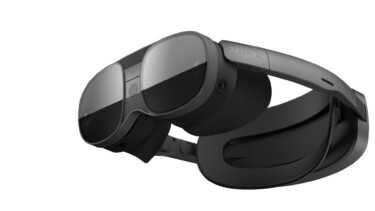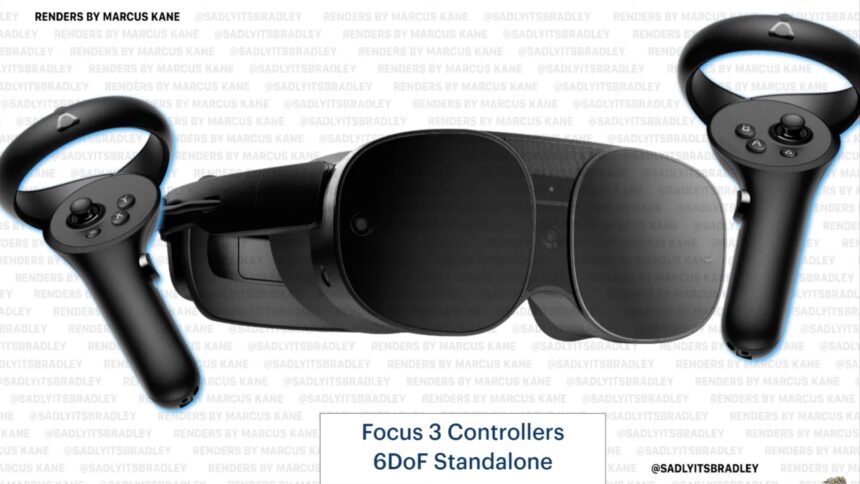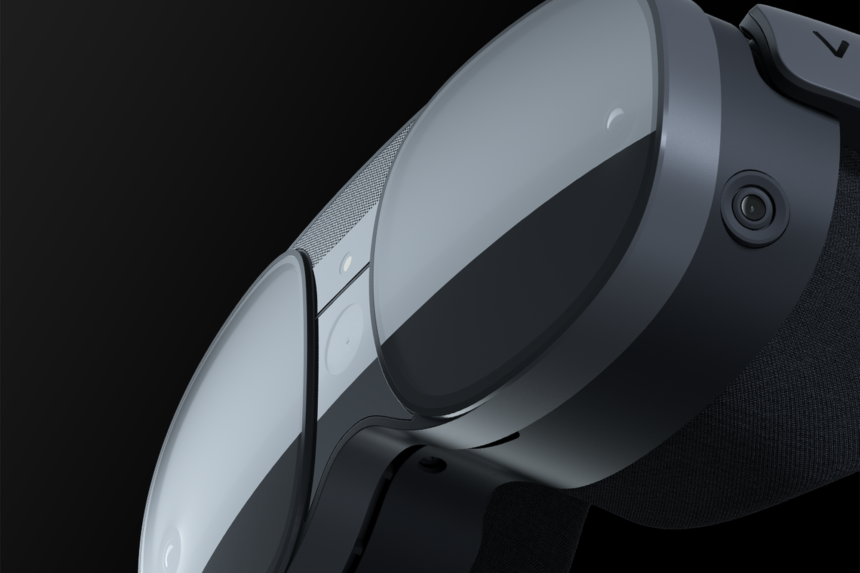HTC's new headset will reportedly be called "Vive XR Elite" and cost $1400

- Information on the name and price added
Update January 1, 2023:
Lynch posts more images on Twitter of the new Vive headset, which he says will be called the "Vive XR Elite." Lynch claims that the price will be $1400.
Twitter user Inscothen found an advance listing on the Vive Store for the Vive XR Elite at the equivalent of around $1400.
@SadlyItsBradley might be placeholder but it was removed pic.twitter.com/s9Mm3JyeI7
— Inscothen (@inscothen) January 1, 2023
Inscothen found the information by simply Googling for Vive XR Elite - the web store was already displayed in the search results. The website is accessible via the web cache here.
The battery in the back of the VR headset is supposed to be a powerbank that is connected to the front part of the headset via USB. This way, the battery could be changed in between and the headset could be in use without charging pauses. The official unveiling will take place on January 5 at CES 2023 (see article below for more information).
Vive XR Elite - $1400 pic.twitter.com/VHnAtzlPR7
— Brad Lynch 🔜 CES 2023 (@SadlyItsBradley) January 1, 2023
Original article December 16, 2022:
At CES 2023 in January, HTC will introduce a slim VR AR headset that is supposed to compete with the Meta Quest (Pro). Now we got the first official picture.
HTC showed the first teaser for a new VR headset for consumers back in October. The company hinted that the upcoming device could be a mix of the slim Vive Flow headset, which requires an external player, and the higher-quality standalone Vive Focus 3. Vive Flow is a flop, Focus 3 is only sold to enterprises and arcades.
HTC plans its comeback on the consumer market
HTC wants to make a comeback on the consumer XR market with the new headset. According to HTC's global product chief Shen Ye, the as-yet-unnamed device will be slim, have all the hardware built in, and offer full-fledged augmented reality capabilities in addition to virtual reality. The new Vive headset will be one of the lightest XR glasses on the market, Ye said.
The first official image shows a design similar to the Vive Flow, with side and front-facing tracking cameras and a depth sensor. Like the Quest Pro, the headset will offer stereoscopic color video passthrough for mixed reality applications, which would set it apart from the Quest 2 and Pico 4. The Pico 4 also offers color passthrough, but only in monoscopy. HTC's video passthrough is supposed to be good enough to read text on the monitor or smartphone.
The device comes with the same VR controllers as Focus 3 and also supports optical hand tracking. The battery of the standalone headset is supposed to last around two hours.
Due to the depth sensor, the new Vive headset could in theory enable higher-quality AR applications than Quest Pro, as it can capture the environment faster and more precisely than Quest Pro with pure camera tracking. Ultimately, however, software quality plays a decisive role here, and developers must first find meaningful application scenarios for video passthrough.
HTC wants to stand out from Meta with better privacy protection. VR headsets are currently "massively subsidized by companies that are trying to vacuum up and take personal data to provide to advertisers," Ye told The Verge. "We don’t believe the way that we want to approach it is to compromise on privacy."
New Vive headset will be pricier than Quest 2 and Pico 4
So much hardware comes at a price: according to a November leak from Brad Lynch, the new Vive headset will cost more than $1,000 and, more like Quest Pro, will be aimed at "prosumers." Modules for face and eye tracking are to follow later. The processor is the Snapdragon XR2 Gen 1, a derivative of the Snapdragon 865 smartphone SoC that is optimized for VR and AR and has been installed in most standalone XR headsets in recent years. Meta Quest Pro uses the Snapdragon XR2+ (infos), a revision of this chip with up to 30 percent more performance, mostly thanks to a spatial separation of CPU and RAM.

A render image of the new HTC headset with controllers. The render is said to be based on leaked images. | Image: SadlyitsBradley / Marcus KaneThe optical system includes flat pancake lenses and two LC displays with a resolution of 1,920 by 1,920 pixels at 120 hertz. The lenses are supposed to allow adjusting the visual acuity, which would be beneficial for people with eye disorders. HTC also plans a modular design for different application scenarios.
An earlier version of this article stated that Quest Pro uses the XR1 Gen 1. This information was wrong and is corrected in the text.
Note: Links to online stores in articles can be so-called affiliate links. If you buy through this link, MIXED receives a commission from the provider. For you the price does not change.
